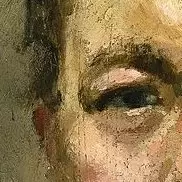I love paintings that evoke what it must have been like when the world was wild; when you were really, impossibly removed from other humans. When wolves howled, and nature - and not your own stupidity - was your greatest danger.
I’m glad that I do not live back then, but it’s nice to think about from the comfort of my heated, air-conditioned home.
Definitely, have you ever read any Jack London?
No, I can’t say that I have. I could look him up and fomd out for myself, bur in the interest of conversation… what does he write? Historical fiction?
Yes historical fiction set in the Pacific Northwest in the 1800s. white Fang, Call of The Wild etc
Oh! I read Call of the Wild, jesus, back in high school, I think. It may not have been my cuppa, since I didn’t look for more work by the author, but tastes change. I’ll have to check that out.
Me and who?
Strong Bloodborne mood with this one.
LSD is pretty great though.
I can’t say, but also I wouldn’t rule it out.
Worth it with a good friend. We’ve sat in a golf course doing the same thing.
While I’m naturally very cautious I would welcome psychedelics in a clinical test - and for others with PTSD etc. I can see the science behind it.
Removed by mod
Removed by mod
Removed by mod
Removed by mod
Removed by mod
Removed by mod
Removed by mod
Removed by mod
Removed by mod
An example of German Romanticism, and one of three similar paintings by Caspar David Friedrich, Two men contemplating the moon features two figures silouted against a light sky while their environment seems to be imposing and darkly contrasting.
German Romanticism has a special trait differentiating it from that of English Romanticism, which is wit and humor. It’s possible the subtle humor here is the two men should be more worried about their environment rather than looking to the sky. Perhaps it is even a commentary on Germanic life at the time.
Other interpretations involve more serious tones, such as the evergreen spruce and dead oak representating Christianity’s triumph over paganism.
Politically, their style of dress was outlawed in 1819, the same year the painting was finished. This was part of the carlsburg decrees which aimed to prevent a sentiment of Germanic unification.
The men are dressed in a style known as “Deutsche Nationaltracht” or “German National Costume.” This style was popular at the end of the Napoleonic Wars and was seen as an expression of anti-french german nationalism and a statement against French, “foolish” fashions.
Removed by mod






